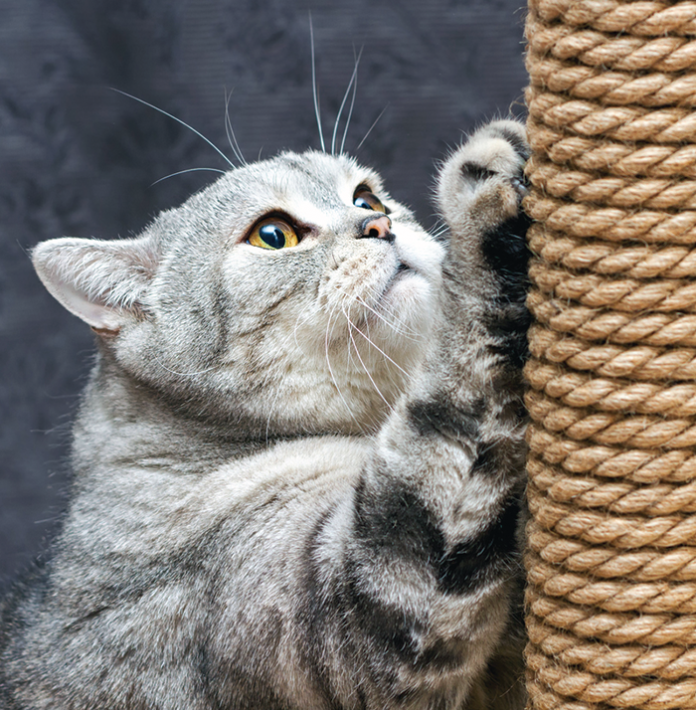Q. Thanks for the recent article on getting cats to stop scratching (June 2020). I have the opposite problem: I need to encourage a cat to scratch!
She has multiple options at her paw-tips (the usual old furniture, cardboard scratch blocks in a variety of shapes and sizes, numerous scratching posts, and a couple of cat trees), but just about the only thing she’ll scratch is a concrete patio block (part of a bookcase) and not sufficiently to dull her claws or remove old sheathings.
I’ve tried to bait some of the sites with catnip (leaf and spray), to no avail. And she has three other family members she can watch and learn the ropes from, as it were. She gets a pet and some kind words whenever she uses the concrete block. But, without any overt signs of pain, her claws eventually curl around and dig into her pads, and it’s off to the veterinarian we go again.
Do you have any suggestions on how to get her to scratch again?
A. Thanks very much for getting in touch, and I understand your concern for your kitty’s nails and paws. In my experience, it can be a challenge to get some cats to use scratching posts if they are not so inclined, but perhaps a few thoughts on this issue will be helpful.
Some cats are picky with respect to the type of material they prefer to scratch on. Trying things like sisal, carpet, corrugated cardboard (if you haven’t tried this already), and wood (branches) is a good first step. Since she seems to like the concrete block, perhaps you can find a concrete/cinderblock that has a more abrasive surface that she will use.
The orientation of scratching posts is also important. Some cats prefer to scratch horizontally, while others prefer a vertical orientation. With some kitties, they like to have a scratching surface that is elevated off of the ground, so hanging a scratching post on a wall off of the floor can be enticing to them. I have even heard of cats that prefer to have elevated scratching posts, but only like them on the corners of walls (i.e., where two walls in a room meet), so it may take some experimentation in this regard.
I’d suggest that you start by trying these new ideas in close proximity to the concrete block on which she currently occasionally scratches. It may ultimately turn out that trying other spots in your house will be successful. The positive reinforcement that you are currently practicing is a great idea, and I think its important that you keep this up. It may also be worth trying to reward her with a small treat when she scratches, but make sure that you don’t feed her too many, as this can predispose her to gaining too much weight.
Despite your best efforts, though, it may be that she will not scratch very much on her own, and if this is the case, it is important that you monitor her nail length closely to prevent them from getting too long. I’d suggest that you learn how to trim her nails, as most owners can do this with a little patience and perseverance. The Cornell Feline Health Center hosts video instructions on how to do this at https://tinyurl.com/CornellNailTrim.
I hope this is helpful, and best of luck with this experimentation. I know that it can be frustrating to find the right combination of material, orientation, and location for scratching posts, but hang in there. If all else fails, learning to trim her nails may turn out to be the best solution so you avoid nail overgrowth. Please send us an update when you can.




